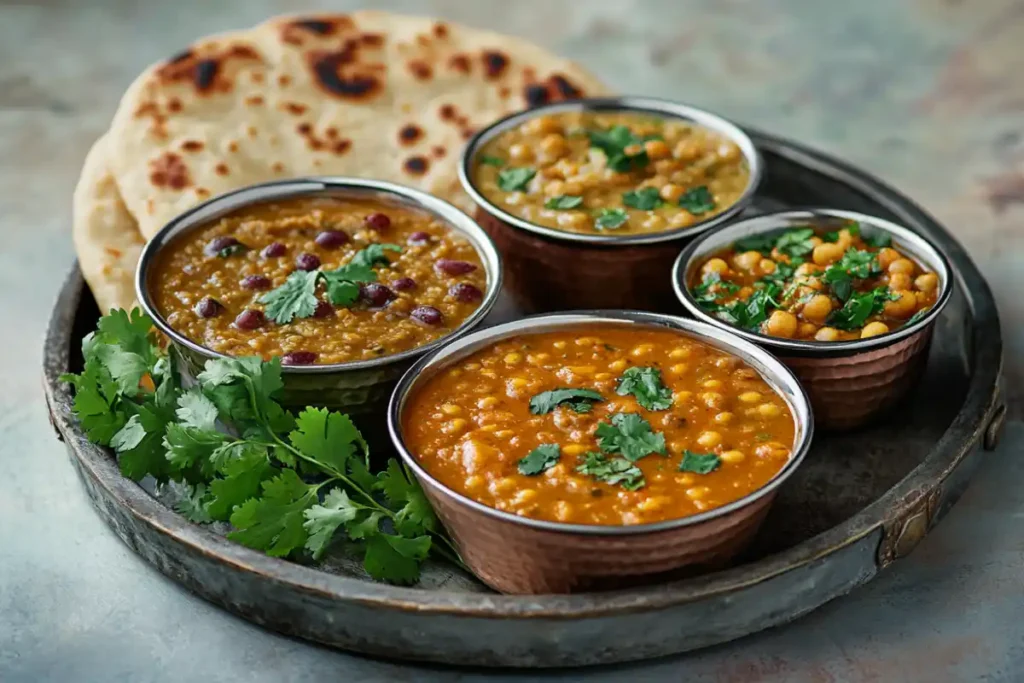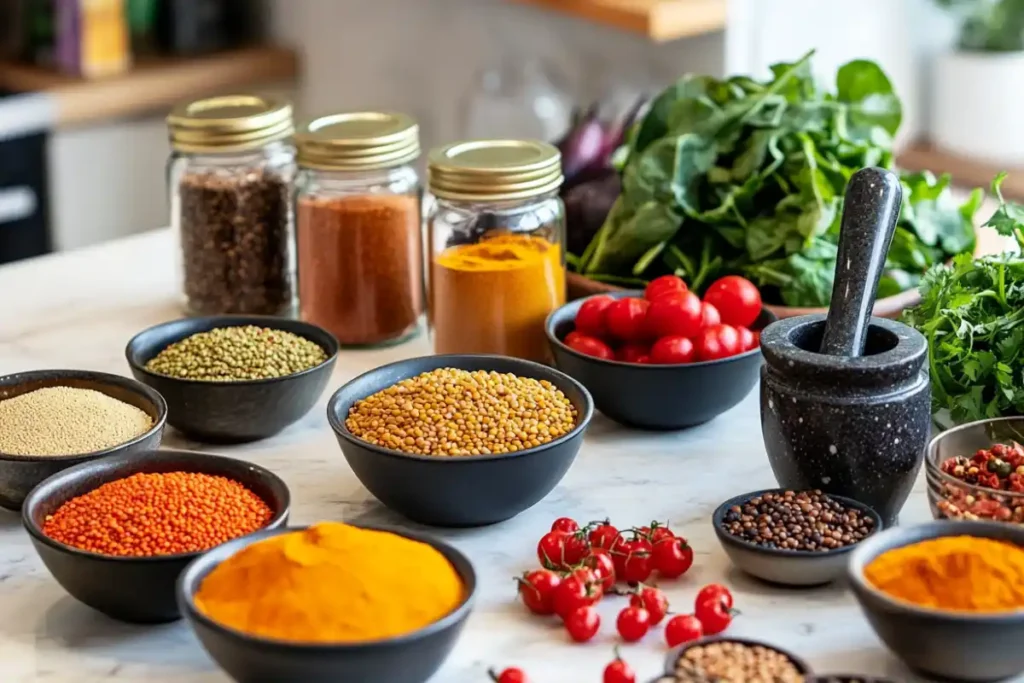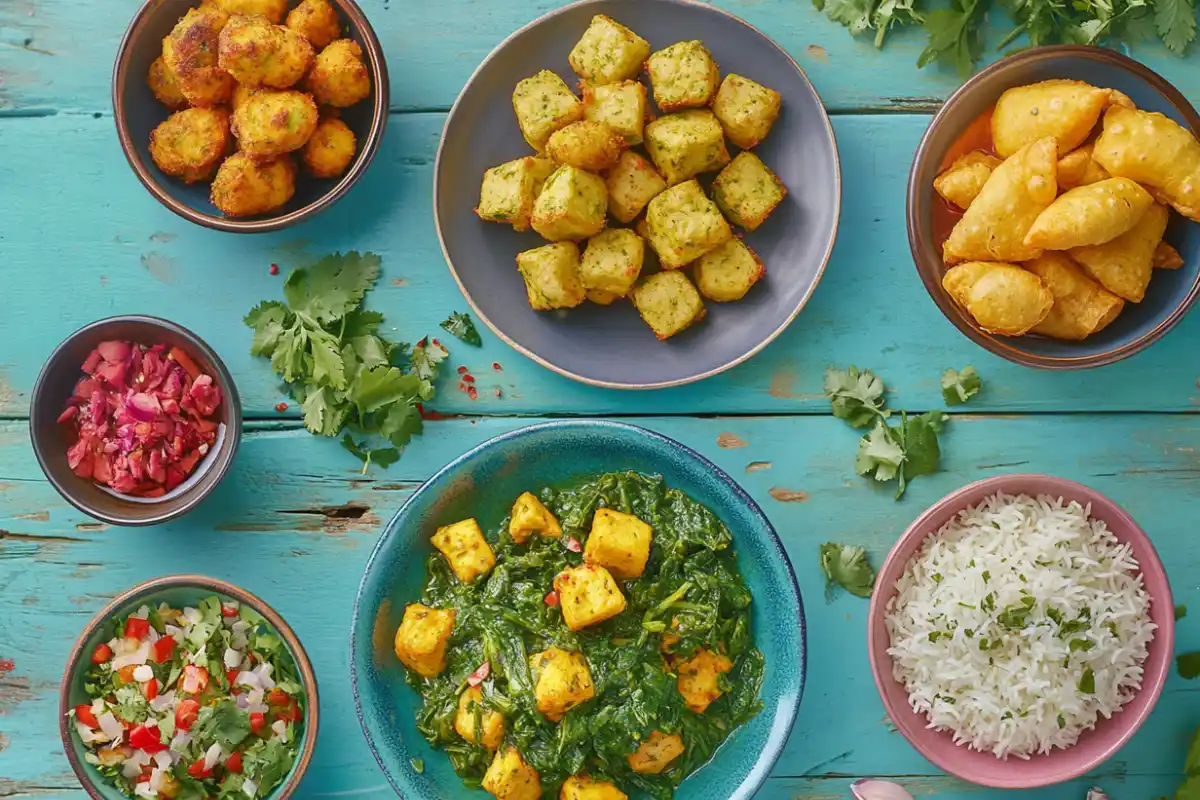Top Indian Vegetarian Dishes to Try: A Comprehensive Guide
Indian cuisine is a vibrant tapestry of flavors, textures, and colors, and at its heart lies the art of creating delectable vegetarian dishes. From comforting curries to crispy snacks, Indian vegetarian food is loved worldwide for its rich taste and variety. With its deep cultural roots and masterful use of spices and fresh ingredients, this cuisine offers a feast for the senses.
In this article, we’ll explore the most popular Indian vegetarian dishes, discuss their regional diversity, and share cooking tips to inspire your culinary adventures. Whether you’re a lifelong vegetarian or just curious to try meat-free meals, this guide will open your palate to a world of bold flavors and comforting classics. Let’s dive in!
Introduction to Indian Vegetarian Cuisine
Overview of Indian Vegetarian Food
India boasts one of the richest vegetarian food cultures in the world. This stems from a combination of historical, religious, and cultural influences. For centuries, vegetarianism has been embraced by many due to the teachings of religions like Hinduism, Jainism, and Buddhism, which emphasize non-violence and compassion toward all living beings.
What sets Indian vegetarian cuisine apart is its ingenious ability to transform humble ingredients—like lentils, chickpeas, vegetables, and grains—into flavor-packed dishes. From the sizzling spices of street food to the creamy richness of restaurant curries, every bite tells a story of tradition and innovation.
What Makes Indian Vegetarian Dishes Unique
It’s all in the details. Indian vegetarian food thrives on the aromatic magic of spices—cumin, coriander, turmeric, and garam masala, to name a few. These spices aren’t just about flavor; they’re also packed with health benefits, such as aiding digestion and boosting immunity.
Cooking techniques like tempering (or tadka), roasting, and slow-cooking bring out the best in each ingredient. For instance, lentils transform into a velvety Dal Makhani through hours of simmering, while roasting eggplants creates the smoky essence of Baingan Bharta. The balance of textures is also key: crispy samosas, fluffy rice in biryani, and creamy gravies work together to create unforgettable meals.
In short, Indian vegetarian cuisine is a celebration of simplicity elevated by creativity. It’s wholesome, satisfying, and a true testament to the idea that you don’t need meat to make a dish shine.

The Top 10 Indian Vegetarian Dishes
Dish 1: Chana Masala – The Hearty Chickpea Curry
Chana Masala is a quintessential Indian vegetarian dish that combines tender chickpeas with a tangy, tomato-based curry. Flavored with spices like cumin, coriander, and garam masala, it’s a filling and flavorful option. Traditionally served with rice or bread like naan, this dish is both nutritious and satisfying, making it a favorite in homes and restaurants alike.
Dish 2: Palak Paneer – Creamy Spinach and Cheese Delight
Palak Paneer is a vibrant green dish featuring pureed spinach cooked with aromatic spices and soft cubes of paneer, a type of Indian cheese. It’s mild yet flavorful, offering a nutritious blend of protein and fiber. Pair it with roti or basmati rice for a wholesome meal.
Dish 3: Aloo Gobi – Potatoes and Cauliflower Curry
Aloo Gobi celebrates the simplicity of potatoes and cauliflower cooked together in a medley of turmeric, cumin, and coriander. Known for its subtle flavors and dry texture, it’s a versatile dish that pairs effortlessly with roti or as part of a thali (a platter with multiple dishes).
Dish 4: Baingan Bharta – Smoky Roasted Eggplant Mash
Baingan Bharta stands out for its smoky aroma and creamy texture. Made by roasting eggplants over an open flame, this dish is combined with tomatoes, onions, and spices. Served with flatbreads like naan, it’s a flavorful example of how simple ingredients can deliver bold tastes.
Dish 5: Dal Makhani – Rich Lentil Curry
A favorite at celebrations, Dal Makhani is a creamy dish made from black lentils and kidney beans, slow-cooked with butter, cream, and spices. Its indulgent texture and rich flavor make it a popular choice for family dinners and festive meals.
Dish 6: Rajma – Kidney Bean Curry
Rajma is the Indian comfort food equivalent of chili, featuring kidney beans simmered in a spiced tomato gravy. This dish pairs perfectly with steamed rice and is often enjoyed as a hearty weekend meal.
Dish 7: Vegetable Biryani – Aromatic Rice Dish
Vegetable Biryani is a fragrant, colorful dish made from long-grain basmati rice cooked with a medley of vegetables, saffron, and whole spices like cloves and cardamom. Served with raita (yogurt dip), it’s perfect for festive occasions or special dinners.
Dish 8: Samosa – Crispy Pastry Snack
Samosas are irresistible snacks featuring a crispy, golden exterior and a spiced filling of potatoes and peas. Often accompanied by tamarind or mint chutney, they’re a staple of Indian street food culture.
Dish 9: Kadai Paneer – Spicy Cheese Curry
This dish combines cubes of paneer with bell peppers and a spicy tomato-based gravy. Cooked in a kadai (wok), it’s bold in flavor and pairs wonderfully with naan or rice.
Dish 10: Dosa – South Indian Crepes
Dosa is a thin, crispy crepe made from fermented rice and lentils. Served with sambar and chutneys, it’s a popular breakfast option in South India, loved for its light texture and versatility.
Regional Diversity in Indian Vegetarian Dishes
North Indian Classics
North Indian cuisine is rich and hearty, featuring creamy curries like Palak Paneer and Dal Makhani. Dishes often incorporate dairy products like paneer and butter, offering indulgent textures and robust flavors. Popular breads like naan and paratha accompany these dishes perfectly.
South Indian Staples
South Indian food is lighter and spicier, with a focus on rice-based dishes like Dosa and Vegetable Biryani. Coconut, tamarind, and curry leaves are key ingredients that add distinct flavors to this region’s cuisine.
West and East Indian Specialties
Western India offers iconic dishes like dhokla and Gujarati thalis, known for their sweet and sour balance. In the East, Bengali cuisine shines with dishes like shukto (a mixed vegetable medley) and flavorful lentil curries. Each region showcases unique techniques and flavors that make Indian vegetarian dishes incredibly diverse.
Nutritional and Cultural Value of Indian Vegetarian Food
Health Benefits of Indian Vegetarian Dishes
Indian vegetarian dishes are not just delicious—they’re also incredibly nutritious. Packed with fresh vegetables, legumes, and grains, these meals provide essential vitamins, minerals, and fiber. For example, dishes like Dal Makhani and Rajma are excellent sources of plant-based protein, while Palak Paneer offers calcium and iron, thanks to the spinach and paneer.
Spices such as turmeric and cumin, commonly used in Indian cuisine, add more than just flavor. Turmeric contains curcumin, a compound known for its anti-inflammatory properties, while cumin aids digestion. Additionally, the emphasis on fresh ingredients and balanced spices ensures that Indian vegetarian meals are both satisfying and good for your body.
Cultural and Religious Significance of Indian Vegetarian Food
Indian vegetarian cuisine is deeply rooted in the country’s culture and traditions. Many of its dishes are inspired by religious practices like Hinduism and Jainism, which advocate non-violence and vegetarianism. Festivals and celebrations across India often feature elaborate vegetarian spreads, showcasing the country’s culinary artistry.
Moreover, regional variations in dishes reflect the diverse geography and traditions of India. For instance, while North Indian cuisine often incorporates dairy, South Indian dishes rely heavily on coconut and tamarind. This diversity ensures there’s always something new to explore within the world of Indian vegetarian dishes.
Tips for Cooking Indian Vegetarian Dishes at Home
Essential Spices and Ingredients
To master cooking Indian vegetarian dishes, stock up on essential spices like cumin, coriander, turmeric, and garam masala. These spices form the foundation of most recipes and give the dishes their distinctive flavors. Ingredients like lentils, chickpeas, paneer, and basmati rice are also staples you’ll want to have on hand.
When it comes to vegetables, seasonal produce is key. For example, fresh spinach makes a huge difference in dishes like Palak Paneer, while ripe tomatoes add depth to curries like Chana Masala.

Cooking Techniques to Perfect
Indian cooking involves techniques that enhance the natural flavors of the ingredients. One of the most important is tempering, or tadka, where spices are fried in hot oil or ghee to release their aroma before being added to the dish. Slow cooking is another crucial method, especially for dishes like Dal Makhani, which develop their rich taste over hours.
Lastly, don’t rush the process. Many recipes require layering flavors, so take the time to let the spices blend together. Your effort will be rewarded with meals that are as authentic as they are delicious.
For more tips on perfecting your recipes, you can check out other helpful articles on Chef’s Tasty Recipes. Whether it’s mastering seasoning or learning about essential kitchen tools, their guides offer fantastic advice for both beginners and experienced cooks!
FAQs About Indian Vegetarian Dishes
1. What are the most popular Indian vegetarian dishes?
Some of the most popular Indian vegetarian dishes include Chana Masala, Dal Makhani, Palak Paneer, Vegetable Biryani, and Samosas. Each of these dishes showcases bold flavors and unique textures that make Indian cuisine a global favorite. Whether you’re exploring hearty curries or crispy snacks, there’s always something to satisfy your taste buds.
2. Are Indian vegetarian dishes healthy?
Absolutely! Most Indian vegetarian dishes are nutrient-dense and made with fresh ingredients. They often include a variety of vegetables, legumes, and whole grains, providing a balanced mix of fiber, protein, and essential vitamins. Additionally, traditional spices like turmeric and ginger have anti-inflammatory and digestive benefits, making Indian vegetarian food both tasty and health-conscious.
3. Can Indian Vegetarian Food Be Adapted for Vegans?
Yes, you can easily adapt many Indian vegetarian dishes to suit a vegan diet. Replace paneer, a type of Indian cheese, with tofu in recipes like Palak Paneer or Kadai Paneer. Swap ghee, often used in tempering, with vegetable oil or coconut oil for a plant-based alternative. For creamy curries, use coconut milk to achieve a rich and satisfying texture.
4. What spices are commonly used in Indian vegetarian recipes?
Indian cooking relies heavily on a few key spices to build its iconic flavors. Common spices include cumin, turmeric, coriander, and garam masala. These spices add warmth, depth, and complexity to dishes like Dal Makhani or Aloo Gobi. Don’t forget to experiment with spices like fenugreek, asafoetida, and mustard seeds for a more authentic touch.
Conclusion: Celebrating Indian Vegetarian Cuisine
Indian vegetarian cuisine is a true celebration of flavors, textures, and traditions. From the smoky richness of Baingan Bharta to the crispy delight of Samosas, these dishes highlight the diversity and creativity of Indian cooking. Each region of India brings its own unique twist to vegetarian meals, offering a treasure trove of culinary experiences.
What truly makes Indian vegetarian dishes so special is their remarkable ability to transform simple, everyday ingredients into something utterly extraordinary. In addition, by carefully blending spices, incorporating fresh produce, and utilizing traditional cooking techniques, these dishes consistently manage to captivate both the palate and the soul. Moreover, their vibrant flavors and textures ensure they stand out in any culinary experience.
Whether you’re just beginning to explore Indian cuisine or you’re already a seasoned fan, there’s always something new and exciting to discover. From experimenting with different spice combinations to trying regional specialties, the opportunities for culinary adventure are endless. Therefore, go ahead—gather your favorite spices, explore a new recipe, and immerse yourself in the colorful, flavorful world of Indian vegetarian dishes. Happy cooking!
